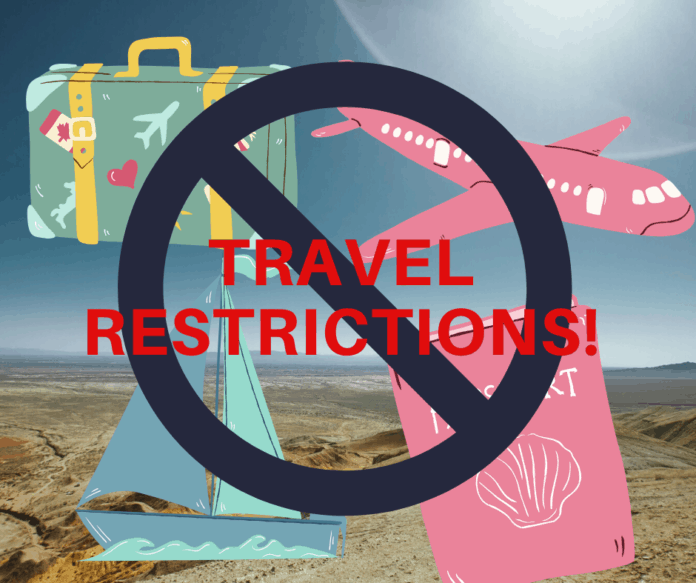
The spread of the pandemic from one country to another has put a heavy toll on international travel with most countries imposing travel restrictions as one of the main precautionary measures. Every country depends a great deal on air travel for continued work, trade, education, diplomacy and so on. Keeping the various factors in mind, different countries have taken slightly different approaches to the travel restrictions that they have imposed. Apart from airports and air travel, cruise ships, which mainly serve the purpose of tourism, are also liable to follow the travel restrictions.
Complete travel restrictions
A vast majority of countries have completely shut down incoming and outgoing air traffic. These countries have some very selective exceptions to the travel ban. Some countries like Malaysia are only allowing their own citizens to come back into the country. UAE, a country that employs a large number of people from outside the country has relaxed the restriction only for family members of their citizens. India, on the other hand, is only permitting the staff on cargo planes, carrying essential supplies, to participate in international travel. Thailand has suspended its Visa on Arrivals at all international airports.
Quarantine for travellers
Countries that have not imposed complete travel restrictions, and have some flights coming into the country, are ensuring that those who are entering are following a strict quarantine, typically for the span of two weeks, before they are allowed more mobility. Of course, these countries are saying no to travellers from certain countries, typically those with high rates of incidence.
Canada issued the Quarantine Act at the end of March imposing a 2-week self-isolation on anyone entering Canada, irrespective of their symptoms of COVID. The governments of Australia, Singapore, and Hong Kong made similar announcements earlier in the month.
Selective Restrictions
Some countries are far more selective in their travel restrictions. They have closed doors to certain countries while remaining open to others. Typically, incoming traffic from the more severely hit countries – including China, Italy and Iran – is restricted.
Germany has imposed a selective restriction prohibiting travel with Switzerland, France, Denmark and a couple of other countries while still allowing the flow of essential goods. Japan, on the other hand, has a list of countries that is far more extensive, including over 70 countries from which travellers are not currently welcome. It should also be noted that those who have travelled through the listed countries in the past two weeks are also not permitted entry. Furthermore, even the incoming traffic that is permitted in some of these countries are under a strict two-week quarantine rule to avoid any transmission of the dormant virus.
The travel restrictions put forth have been responsive to the emerging statistics indicating the spread of the pandemic in different parts of the world and are being held as temporary stopgaps to control the COVID-19 situation. Most of them are under the “until further notice” status. These may change to become more relaxed or stringent based on how quickly we are able to eradicate the virus through our preventive practices.


















